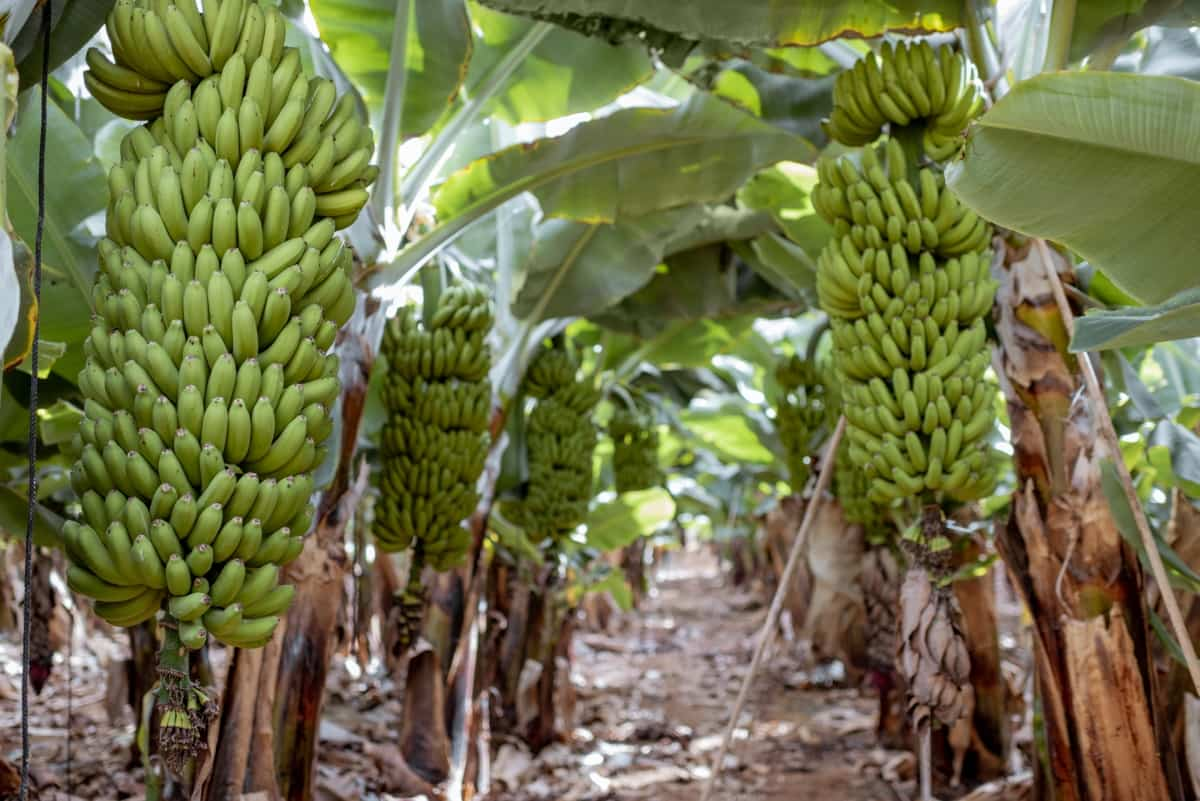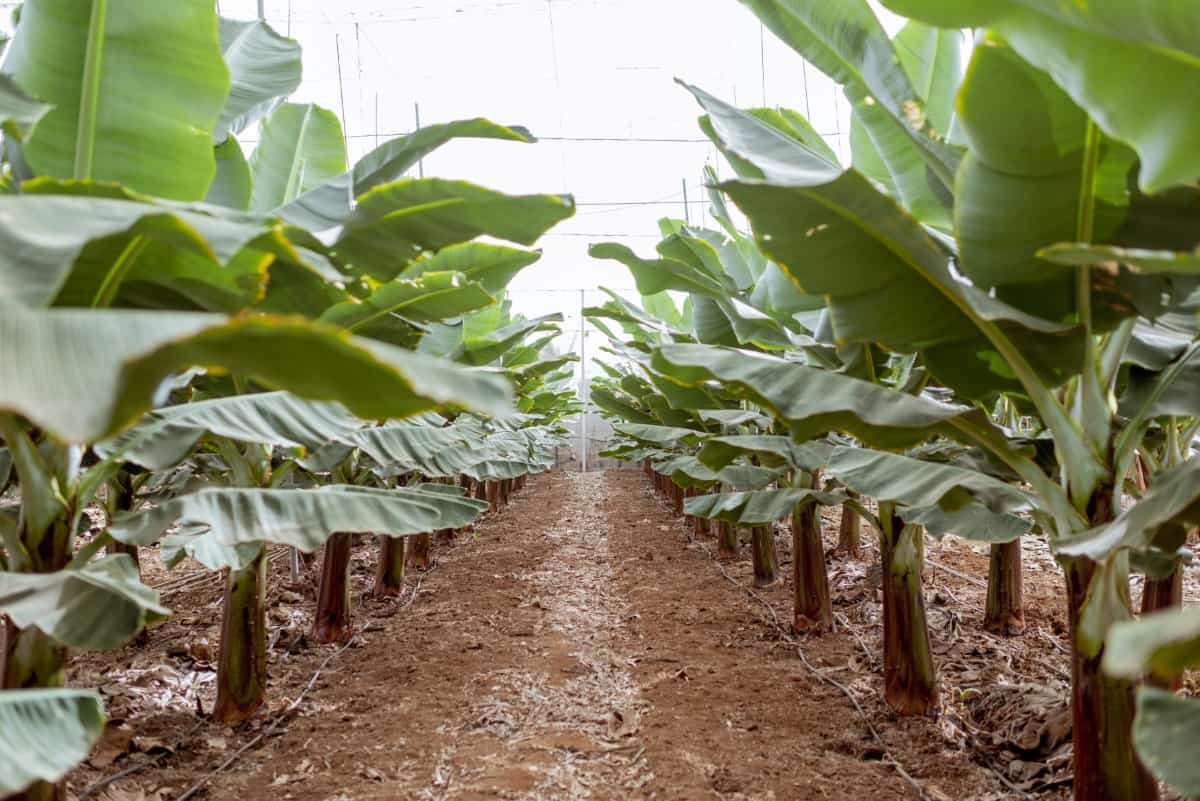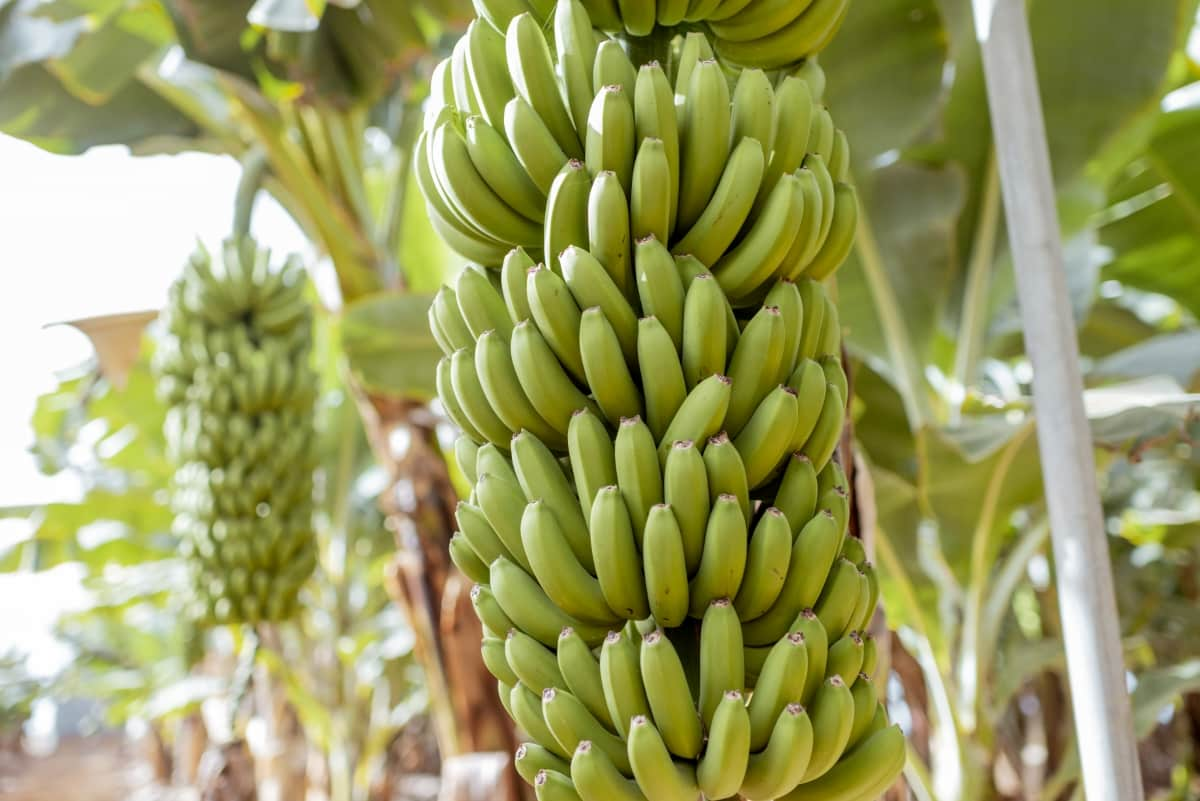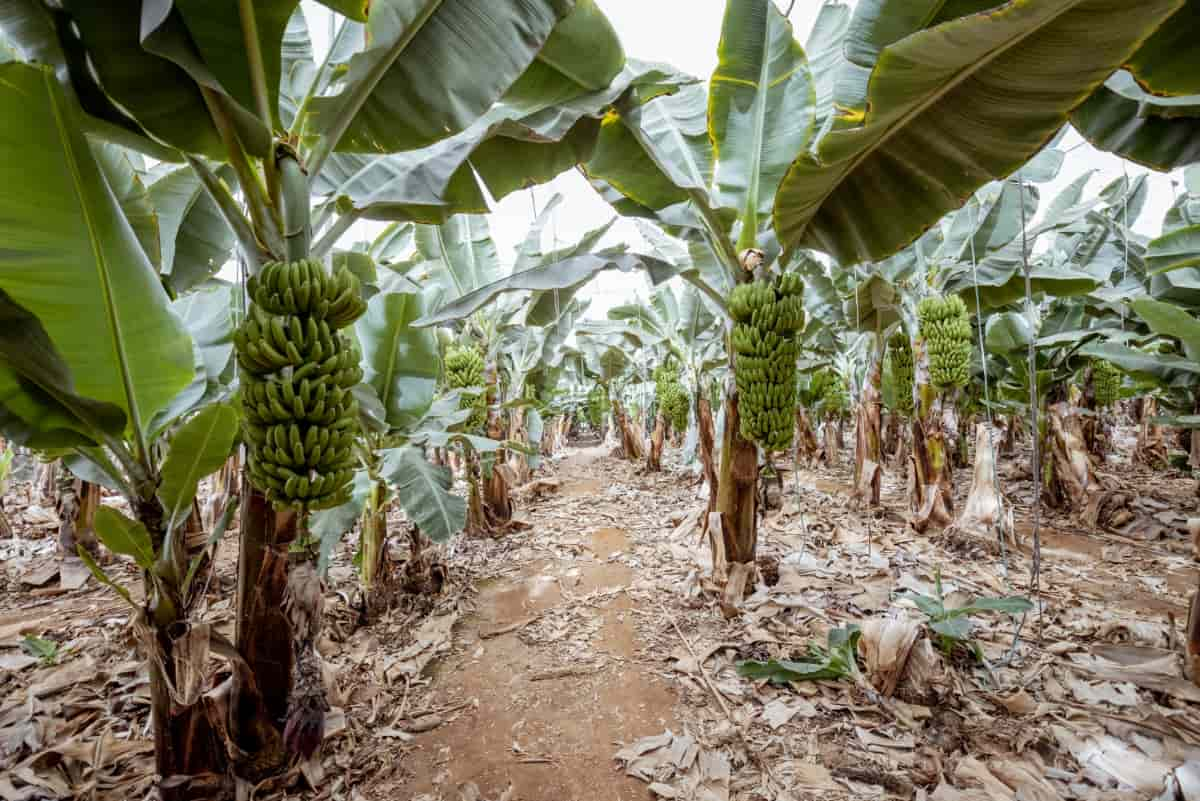Preparing the land for a banana plantation is crucial in ensuring a healthy and successful banana crop. Proper soil preparation is essential, as bananas have specific soil profiles that need to be met to thrive. In this guide, we will discuss the soil requirements and the general steps involved in preparing the land for banana cultivation.

Understanding the Soil Requirements for Banana Plantation
Banana plants thrive in well-drained, fertile soils with specific requirements. They prefer loamy, sandy loam, or clay loam soils with a pH range between 5.5 and 7.0. Adequate organic matter content, such as compost or well-rotted manure, is essential for nutrient retention and moisture control.
Good drainage is crucial to prevent waterlogging, which can harm the roots. Bananas need consistent moisture, so irrigation is often necessary, especially in dry climates. Regular soil testing can help maintain the proper pH and nutrient levels. Good soil preparation and management are essential to prosperous banana plantations, ensuring optimal growth and fruit production.
Assessing the Soil Quality: A Crucial Step in Preparing Land for Banana Plantation
- It evaluates soil texture, pH levels, organic matter content, and drainage capacity.
- Bananas thrive in well-drained, loamy soils with a pH range of 5.5 to 7.0. Soil tests determine nutrient deficiencies, guiding the application of fertilizers to ensure optimal growth.
- Adequate organic matter improves moisture retention and nutrient availability. Proper drainage prevents soggy conditions that can harm the plants.
- An accurate soil quality assessment enables tailored soil amendments and irrigation plans, ensuring the best conditions for successful banana cultivation, ultimately leading to higher yields and quality fruits.
How to Prepare the Land for Banana Plantation
Soil Assessment: Begin by analyzing soil texture, pH, and nutrient levels
It typically involves evaluating soil texture, pH, and nutrient levels. Soil texture means the soil’s sand, clay, and silt ratio, influencing water-holding capacity and drainage. pH measurement assesses the soil’s acidity or alkalinity, with values impacting nutrient availability and microbial activity.
Nutrient analysis involves testing for essential elements like nitrogen, phosphorus, potassium, and micronutrients. These assessments provide valuable information for agriculture, gardening, and environmental conservation, helping determine soil quality and guiding appropriate amendments for optimal plant growth and ecosystem health.
Analyzing the pH Levels and Nutrient Content of the Soil for Banana Plantation
Analyzing pH levels and soil nutrient content is crucial for a successful banana plantation. Bananas thrive in soils with a pH range of 5.5 to 7.0. Conducting a soil test helps determine the soil’s pH and nutrient composition. Adjusting pH, if necessary, ensures that essential nutrients are available for plant uptake.
In case you missed it: The Complete Guide to Banana Farming: Steps of Planting to Harvesting for Beginners

The test also reveals any nutrient deficiencies, allowing for precise fertilization. Critical nutrients for banana plants include potassium, nitrogen, and phosphorus. Based on soil analysis, proper nutrient management promotes robust plant growth, flower development, and fruit production. Regular soil testing and adjustments are vital for maintaining soil health and sustaining high-quality banana crops.
Importance of Soil Drainage and Moisture Retention in Banana Plantation
Soil drainage and moisture retention are vital for prosperous banana plantations. Adequate drainage prevents soggy conditions that can damage the roots and lead to plant stress or disease. On the other hand, retaining sufficient moisture is essential for consistent growth and fruit production. Bananas require a consistent water supply to thrive, and well-drained soil ensures excess water doesn’t stagnate around the roots. Proper drainage and moisture retention management help maintain an optimal soil moisture balance, promoting healthy banana plants and high-quality fruit yields.
Implementing Organic Matter and Fertilizers to Enhance Soil Health for Banana Plantation
Incorporating organic matter, such as compost and well-rotted manure, is vital for improving soil health in banana plantations. Organic matter enriches the soil by enhancing its structure, water-holding capacity, and nutrient content. Additionally, applying balanced fertilizers tailored to the specific needs of banana plants can correct nutrient deficiencies and ensure optimal growth. Combining organic matter and carefully chosen fertilizers creates a fertile environment, promoting robust root development, healthy foliage, and bountiful fruit production in banana plantations, ultimately leads higher yields and crop quality.
Controlling Weeds and Clearing Debris: Essential Tasks in Land Preparation for Banana Plantation
Effective weed control and debris removal are critical tasks when preparing land for banana plantations. Weeds compete with banana plants for nutrients, water, and sunlight, hindering their growth. Clearing debris like rocks and branches minimizes obstructions and ensures a clean planting site.
In case you missed it: Different Banana Varieties to Grow in Your Farm: Top 10 Best Cultivars

Weed management methods can include manual removal, mulching, or herbicide application, depending on the scale of the plantation. By eliminating weed competition and debris, banana plants can establish themselves more easily, maximizing their chances for healthy growth and robust fruit production.
Addressing Soil Erosion and Slope Management for Sustainable Banana Plantation
Managing soil erosion and slopes is crucial for sustainable banana plantations. On sloping terrain, erosion can strip away valuable topsoil and damage plant roots. Implementing contour farming, terracing, or covering crops can help control erosion by stabilizing the soil. Additionally, planting windbreaks and maintaining ground cover can reduce soil loss and protect against erosion caused by wind and rain. These practices promote soil conservation, ensuring the long-term health and productivity of banana plantations while minimizing environmental impacts.
Considerations for Irrigation and Water Management in Preparing Land for Banana Plantation
Efficient irrigation and water management are essential when preparing land for a banana plantation. Assess the local climate and rainfall patterns to determine the irrigation needs. Implement a reliable irrigation system, like drip or sprinklers, to maintain consistent soil moisture, especially during dry spells. Monitor water quality and avoid salinity issues. Provide proper drainage to prevent waterlogging, which can harm banana plants. By addressing these considerations, you can optimize water use, support healthy plant growth, and increase the overall success of the banana plantation.
Finalizing Land Preparation: Ensuring Optimal Conditions for Successful Banana Plantation
To secure ideal conditions for a successful banana plantation, complete essential tasks like soil analysis, pH adjustment, organic matter incorporation, and proper fertilization. Control weeds, clear debris, and manage soil erosion. Implement adequate drainage and irrigation systems. Choose appropriate planting methods, spacing, and pest control measures.
In case you missed it: Banana Crop Profile: Cultivation, Varieties, Fertilizers, Yield, and Production Practices

Maintain a consistent soil moisture balance, protect against extreme weather conditions, and continually monitor soil health. A well-prepared land offers optimal conditions, fostering robust banana growth, maximum fruit production, and long-term sustainability.
Conclusion
In conclusion, analyzing soil quality, adjusting pH levels, incorporating organic matter, and implementing effective drainage and irrigation systems create an optimal environment. Weed control, debris removal, and erosion management further ensure successful growth. By prioritizing these steps, growers can maximize yields and cultivate healthy, high-quality banana crops.
- Feed Your Flock for Less: Top 10 Tips to Save on Chicken Feed
- Ultimate Guide to Ossabaw Island Hog: Breeding, Raising, Diet, and Care
- Hatching Answers: The Top 10 Reasons Your Chickens Aren’t Laying Eggs
- Eggs and Economics: Breaking Down the Cost of Raising Backyard Chickens
- Defend Your Greens: Proven Methods to Keep Iguanas Out of Your Garden
- Ultimate Guide to Cinnamon Queen Chicken: A Comprehensive Guide for Beginners
- Ultimate Guide to California Tan Chicken: Breeding, Raising, Diet, Egg-Production and Care
- Ultimate Guide to Marsh Daisy Chicken: Breeding, Raising, Diet, and Care
- 10 Types of Chicken Farming Businesses You Can Start for Profits